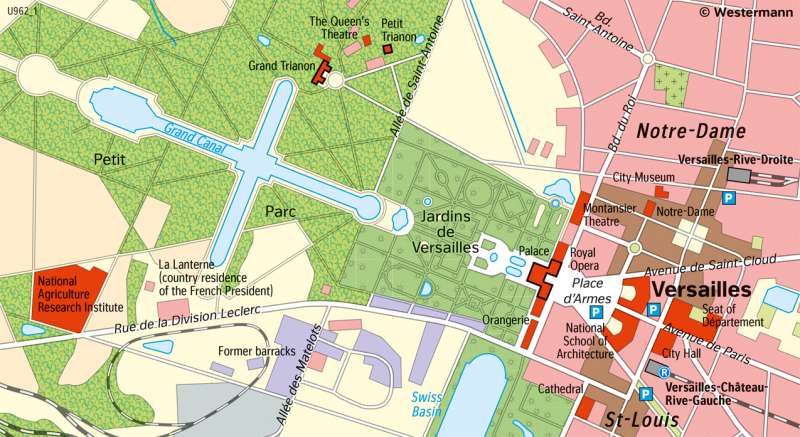Versailles - Palace, gardens and city centre today
Turn of an Era
978-3-14-100890-6 | Page 93 | Ill. 5

Overview
Today, Versailles is the administrative centre of the Yvelines département, the seat of the Versailles diocese and has a population of just under 90,000. Thanks to the famous palace complex, the city is one of the most important tourist destinations in France, attracting over 6 million visitors a year. It is also part of the greater Paris region; from its eastern outskirts it is only a few kilometres to the Boulevard Périphérique, which encloses the Ville-de-Paris department.
City development since the Age of Absolutism
The layout of the main traffic axes, which all lead to the château complex and thus became a symbol of absolutism, has been preserved in its basic structures. These axes provided the basic framework for later settlement. Under Louis XIV's successors, representative administrative buildings, aristocratic palaces, churches and squares were built between the radial main streets. With the French Revolution in 1789 and the departure of the Bourbons, the era as a royal residence came to an end, causing the city to lose importance; the population fell from 50,000 to 28,000 between 1790 and 1824. After the First World War, the development into a modern city began, which, after interruption by the Second World War, accelerated with the elevation to the administrative seat of the département in 1965. Today, the elegant university town is known, among other things, for its wide range of cultural activities.




